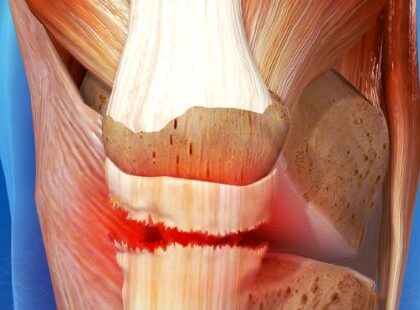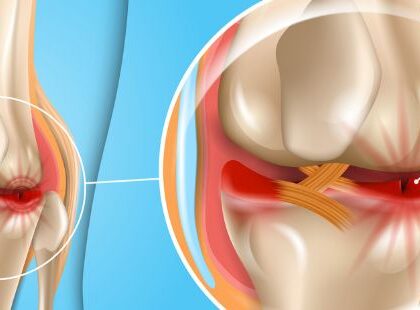
Injuries can occur because of everyday activities or sports and when one occurs, there are different applications to alleviate the symptoms. One of the first things that comes to mind is whether to use ice vs heat on the affected area. But many people are also confused about which option is best; the duration for which it should be used & what the difference between the two is.
In order to understand when to use ice vs heat, it’s important for you to understand how your body reacts to these injuries. There is a difference between an acute injury & a chronic one and understanding this difference will help you ascertain when you need to use ice or heat.
Types of Injuries that need Ice

The ideal practice is to always apply ice to any acute injury. Acute injuries such as sprains, involves tissue damage & inflammation all around the injury site; these are essentially short-term injuries
Examples of acute injuries are:
- Any joint sprain (most common is ankle)
- Muscle strain (slight pull on the muscle that has aggravated it, but not quite torn)
- Acute pain just after intense exercise
- Red, hot/swollen body part
Whenever you sprain something, like an ankle, you damage the ligaments that support the joint and the corresponding blood vessels so swelling occurs. Applying an ice bag/a bag of frozen vegetables, helps in constricting the blood vessels thus reduces the swelling and minimising some pain that you will be feeling.
Plantar Fasciitis is a great example of an ongoing injury that greatly benefits from icing when a flare up is present.
Tips for using Ice with an Injury
Just as with any other injury, it’s important that you respond quickly. The sooner you apply ice the faster the inflammation will reduce and this will facilitate the healing process.
You can also use ice after high-intensity exercise in order to prevent/reduce any inflammation. This will most likely benefit areas of old injury and assist with muscle recovery. Utilising an ice bath is a great example.
Ensure that you limit the icing sessions to a total of 20-minutes. This is because excessive icing might irritate the skin or cause tissue damage. Good results are gleaned by icing for 5 mins, taking a break for 5 and then re icing, continue this for 20 min periods. With acute injuries doing this morning and evening over the first 24-48 hours will be very beneficial.
If you are unsure about whether the injury should be treated with ice vs heat, always seek advice from a professional as you may also require the assistance of a therapist to help you through your injury management.
The simplest way to decide between ice vs heat is; If there is any swelling, use ice. If the swelling doesn't reduce with it, visit your doctor.
Types of Injuries that need Heat

Chronic pain and tension are the conditions that generally require heat therapy. This kind of pain indicates that your body has not healed completely and that is why there is recurrence of discomfort. Some of the most common chronic conditions are:
- Muscle pain/soreness
- Muscular tension
- Stiff joints
- Old/recurring injuries
In effect, heat therapy does exactly the opposite of what ice therapy does. Unlike the latter’s ability to constrict the blood vessels, the heat source allows the blood vessels to expand, stimulating circulation and increasing tissue elasticity, facilitating muscular relaxation and providing pain relief.
Tips to using Heat for an Injury
Heat therapy is a very useful stress management tool, best applied to the commonly tense Shoulders & Neck. The soothing sensation of heat over the shoulders and neck is a very effective way of managing shoulder tension, minimising tension headaches and limiting the amount of transference of that tension into the jaw whilst you are sleeping.
Following up the heat therapy with gentle neck/shoulder stretches provides great relief.
You can apply the heat with a heating pad/pack or a hot, damp towel. A hot shower is also useful in relieving shoulder/neck discomfort for the time poor. Our Infra Red Sauna is a fantastic tool to use with chronic tension. The warmth emitted combined with the infra red waves penetrating deep into the body, allows a deep release of tension.
Just as is the case with cold therapy, it is also important to take some precautions. Do not use heat for an extended period of time & do not sleep with the heating treatment on. This can lead to irritation, blisters, & sometimes even burns.
The best thing is to use the treatment in 20-minute blocks.
Our Secret Weapon for Self Managing Headache Pain
We often get asked which is better for chronic and intense headache pain? Heat or ice?
The answer: both! When placed strategically at the same time you can get great results! Try placing something cool (not ice cold) under the back of your neck and placing something warm under your knees. This will draw away any inflammation from the back of the head (which can often co manifest with sharp frontal head pain) and it will draw it down the body to dissipate. We have had quite a few clients report great results using this method!
Timely Treatment is Important
Sports injuries or ones caused by any other activity should never be taken lightly. It must be understood that if the swelling or pain do not recede with the Ice vs Heat treatment, you should see a doctor without delay. Sports people should be even more careful as at times these injuries, if not treated properly can result in lasting damage to that area.
Massage therapy is fantastic in dealing with and managing all chronic pain and muscular discomfort. Massage therapists are specialists at muscular manipulation and the results yielded offer great relief for clients.
We recommend Sports Chiropractic for for all acute injuries. Unlike regular Chiropractic, Sports Chiro offers treatment in all soft tissue and extremity injury. Not subject to solely exercise rehabilitation, Sports Chiro gets the injury right first then implements the exercise, getting you back on your feet faster!









